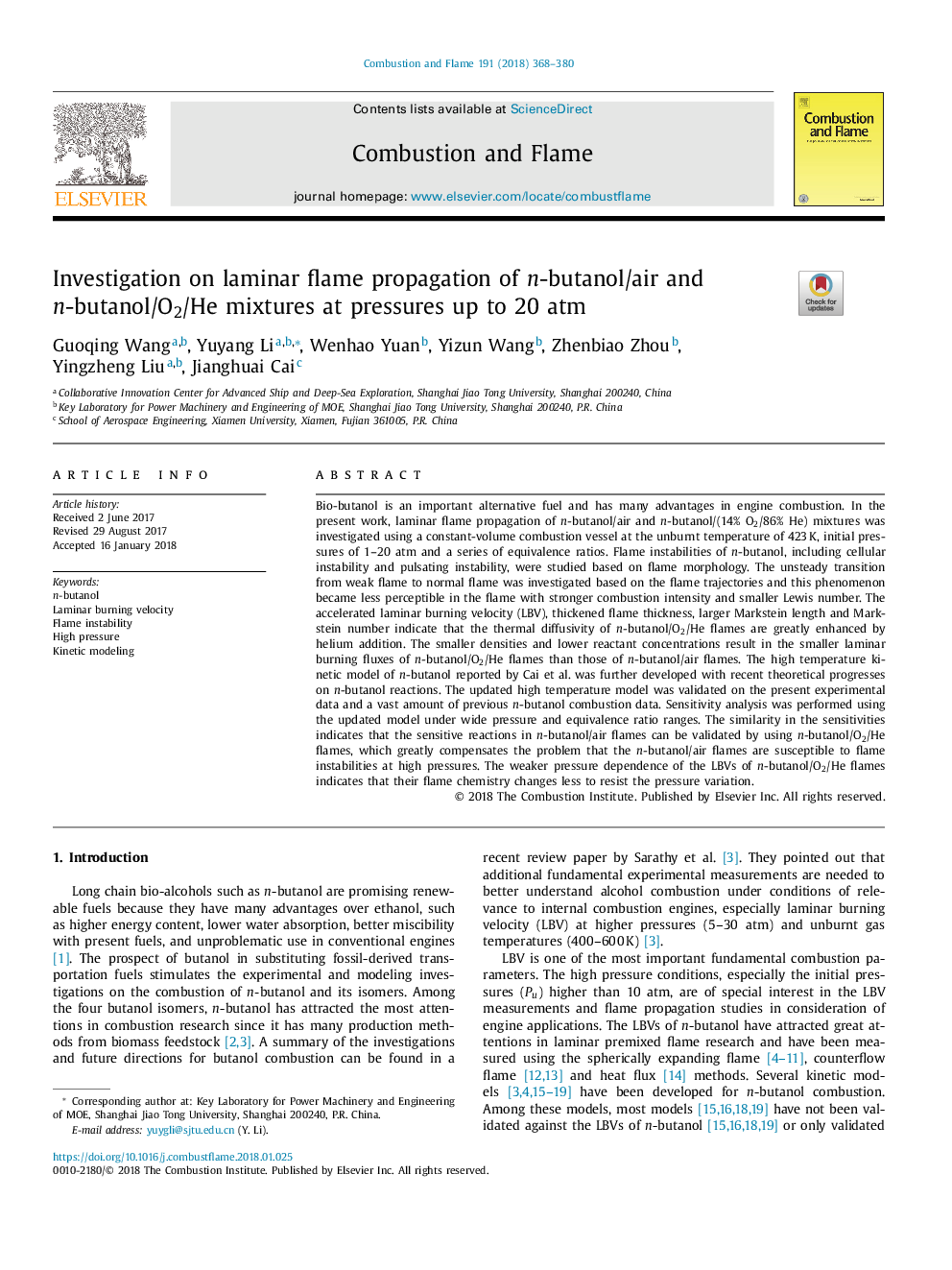| Article ID | Journal | Published Year | Pages | File Type |
|---|---|---|---|---|
| 6593765 | Combustion and Flame | 2018 | 13 Pages |
Abstract
Bio-butanol is an important alternative fuel and has many advantages in engine combustion. In the present work, laminar flame propagation of n-butanol/air and n-butanol/(14% O2/86% He) mixtures was investigated using a constant-volume combustion vessel at the unburnt temperature of 423â¯K, initial pressures of 1-20 atm and a series of equivalence ratios. Flame instabilities of n-butanol, including cellular instability and pulsating instability, were studied based on flame morphology. The unsteady transition from weak flame to normal flame was investigated based on the flame trajectories and this phenomenon became less perceptible in the flame with stronger combustion intensity and smaller Lewis number. The accelerated laminar burning velocity (LBV), thickened flame thickness, larger Markstein length and Markstein number indicate that the thermal diffusivity of n-butanol/O2/He flames are greatly enhanced by helium addition. The smaller densities and lower reactant concentrations result in the smaller laminar burning fluxes of n-butanol/O2/He flames than those of n-butanol/air flames. The high temperature kinetic model of n-butanol reported by Cai et al. was further developed with recent theoretical progresses on n-butanol reactions. The updated high temperature model was validated on the present experimental data and a vast amount of previous n-butanol combustion data. Sensitivity analysis was performed using the updated model under wide pressure and equivalence ratio ranges. The similarity in the sensitivities indicates that the sensitive reactions in n-butanol/air flames can be validated by using n-butanol/O2/He flames, which greatly compensates the problem that the n-butanol/air flames are susceptible to flame instabilities at high pressures. The weaker pressure dependence of the LBVs of n-butanol/O2/He flames indicates that their flame chemistry changes less to resist the pressure variation.
Related Topics
Physical Sciences and Engineering
Chemical Engineering
Chemical Engineering (General)
Authors
Guoqing Wang, Yuyang Li, Wenhao Yuan, Yizun Wang, Zhenbiao Zhou, Yingzheng Liu, Jianghuai Cai,
